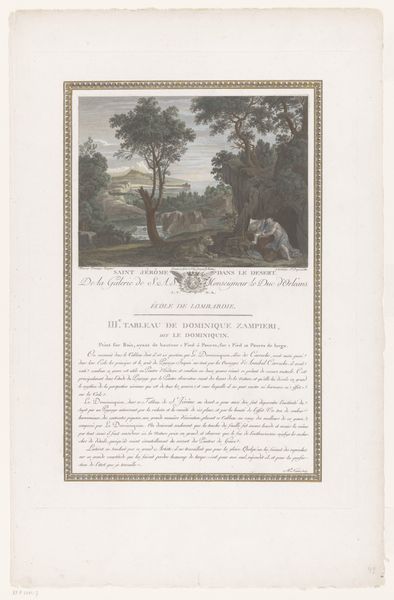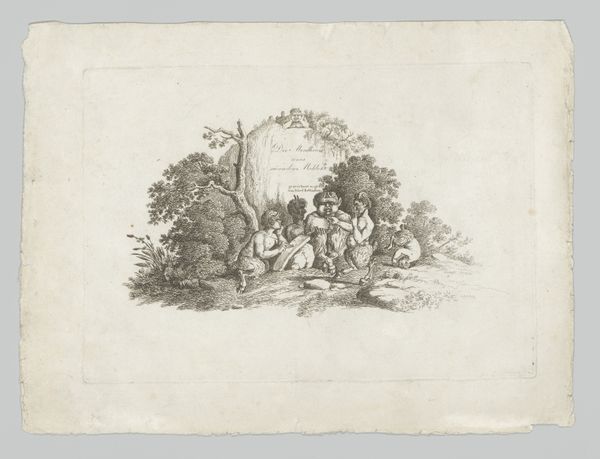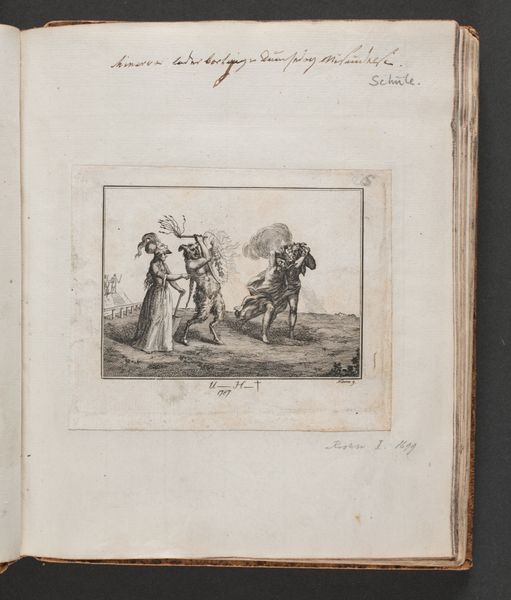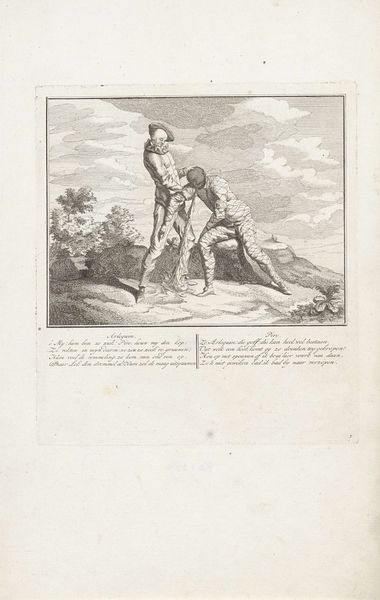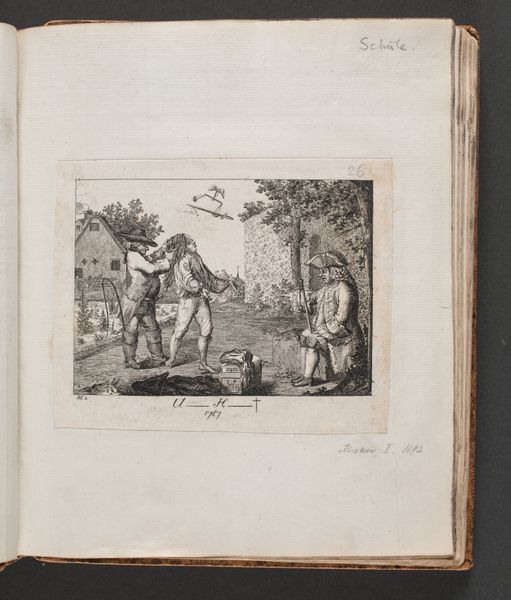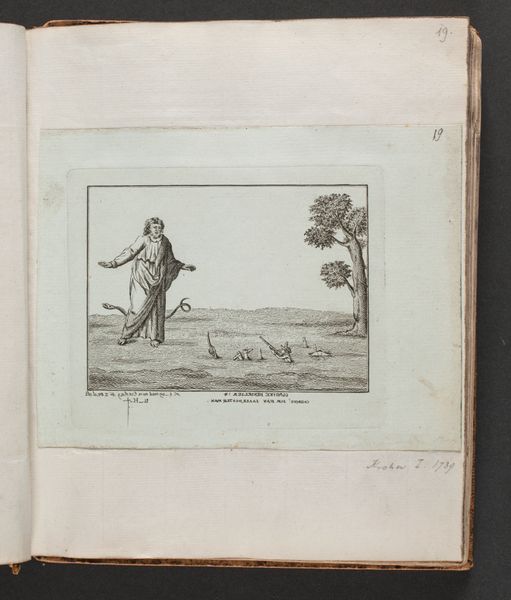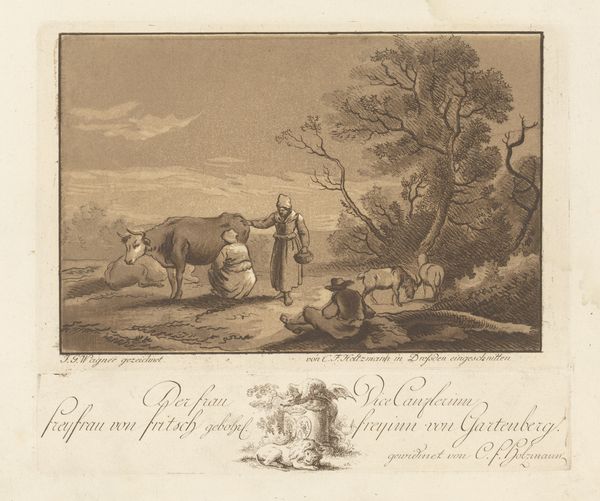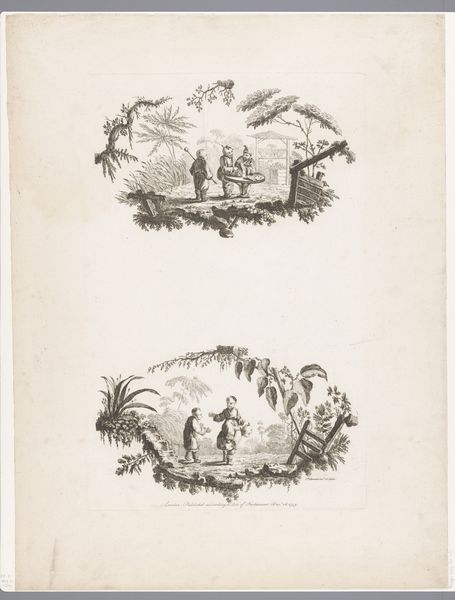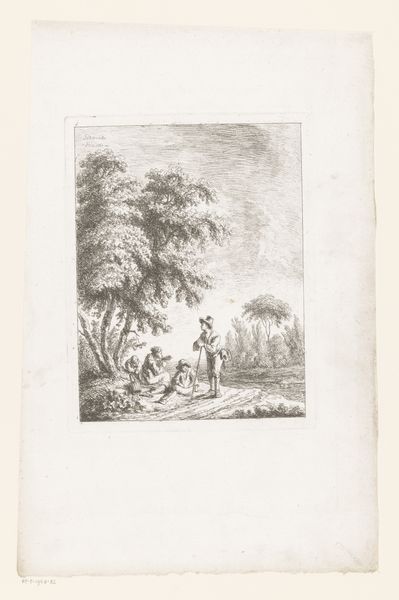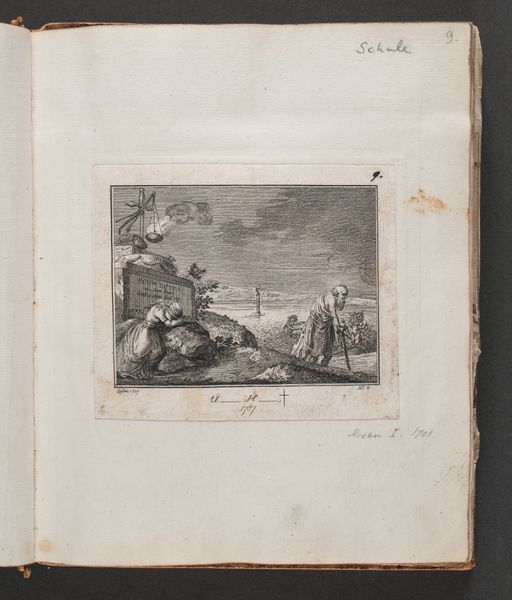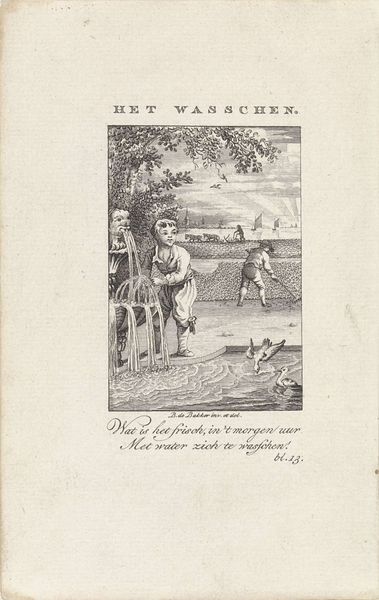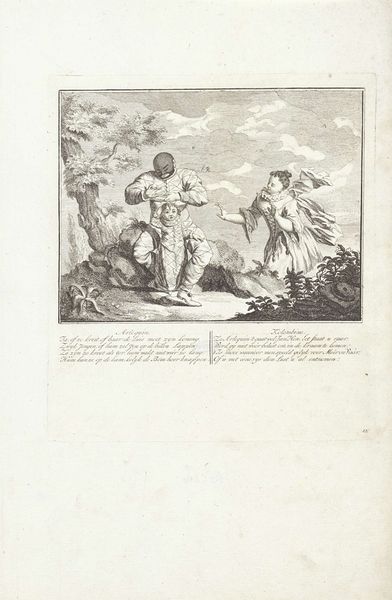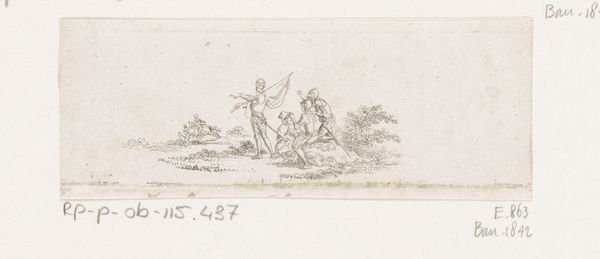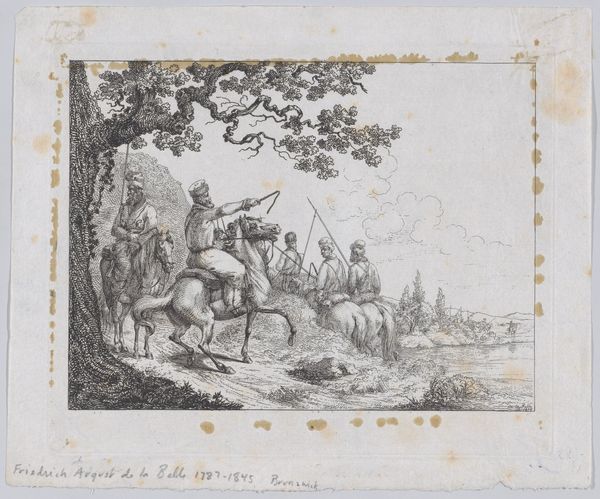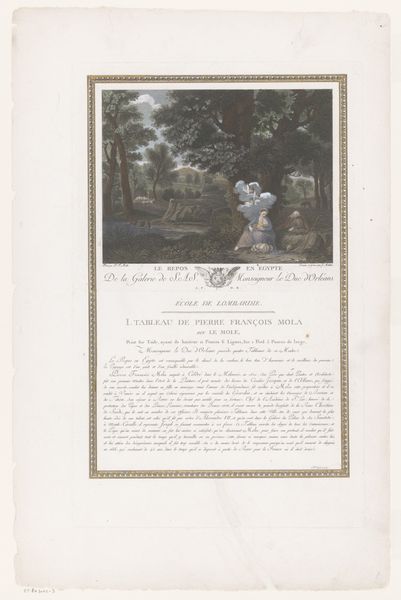
drawing, paper, watercolor
#
drawing
#
dutch-golden-age
#
landscape
#
figuration
#
paper
#
watercolor
#
coloured pencil
#
genre-painting
#
mixed media
Dimensions: height 313 mm, width 204 mm
Copyright: Rijks Museum: Open Domain
Curator: The gentle melancholy of this drawing by Gesina ter Borch, created in 1653, is quite striking. Its title is "Boerenpaar, van achteren," which translates to "Peasant Couple, From Behind." It’s a mixed media work, primarily watercolor on paper, held here at the Rijksmuseum. Editor: It feels like a memory, faded and wistful. The muted colors and the fact that they’re walking away really create this sense of quiet reflection. You almost feel like you’re intruding on a private moment, though you can't see their faces. Curator: Precisely! It’s tempting to interpret the pair as symbolic. Back views in art often deny us the specifics of identity, shifting the focus to shared human experience and universality. It makes one wonder about themes of labor and belonging. The tools that they are holding make me want to analyze their role and place within their own world. Editor: And think of the social context! The Dutch Golden Age was marked by huge social shifts, economic flourishing, and a rise of genre paintings. What does it say about Dutch society that they choose to depict laborers, perhaps even romanticizing a humble life in the country side? Curator: Yes, and perhaps the text above their image relates? Calligraphy itself carries tremendous meaning of legacy and culture within this society. Editor: True. And even just seeing them together… they represent resilience. It makes me think of intergenerational connections. Maybe the baskets represent things passed down—literal harvests or stories shared between generations. Curator: Perhaps this symbolizes hope and continuity? Even simple items—those baskets, that walking stick— become incredibly potent signifiers, weighted with communal history. Ter Borch also invites viewers into intimate themes such as home. Editor: It's a powerful invitation to reflect. How different social classes viewed work and play? Perhaps they offer the public an exploration into understanding each other's lives. Curator: Definitely. It's interesting how the composition and subdued tones create a reflective, shared viewing space across generations. Editor: This small watercolor really does speak volumes, offering so many avenues for contemplation.
Comments
No comments
Be the first to comment and join the conversation on the ultimate creative platform.
